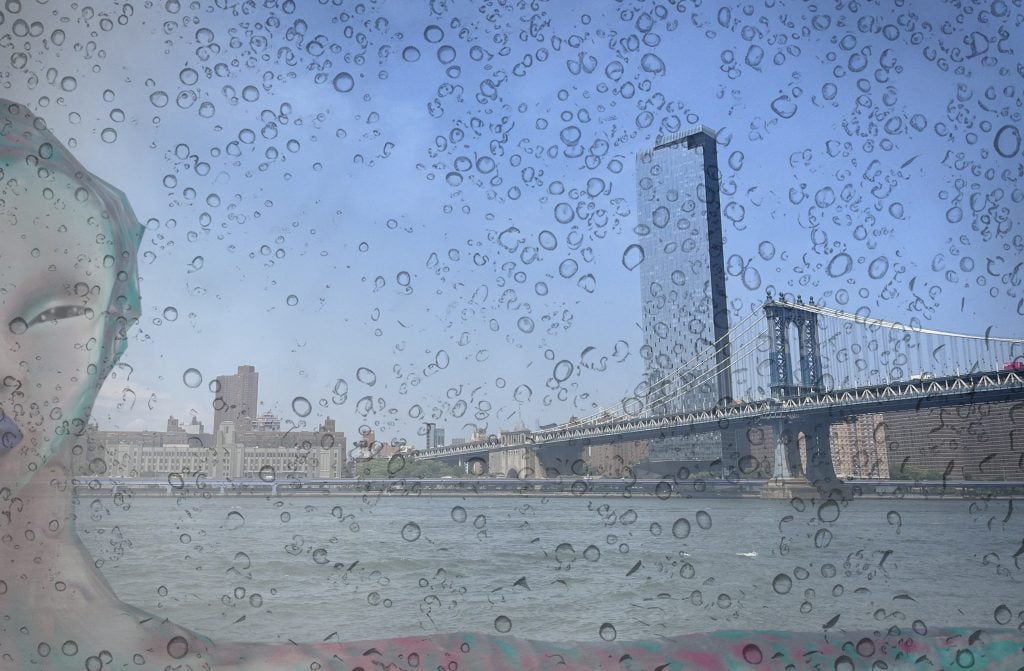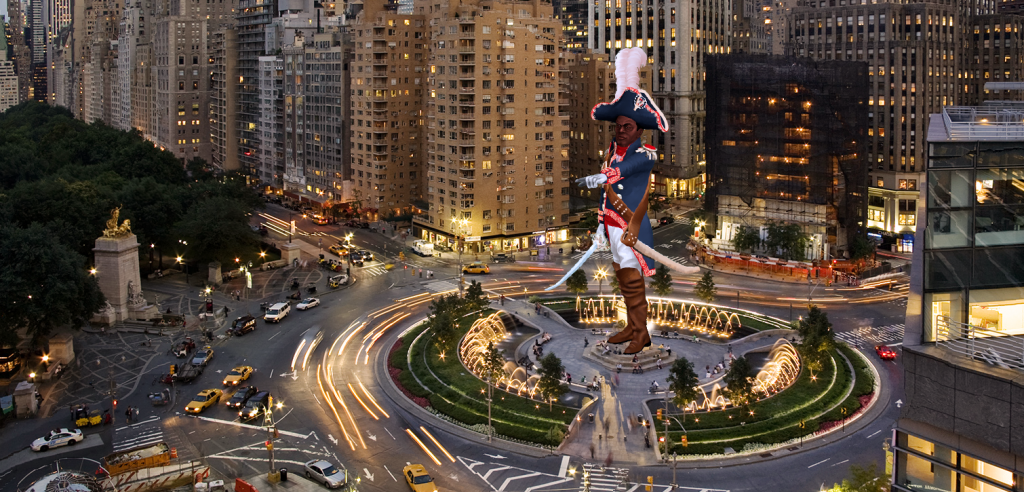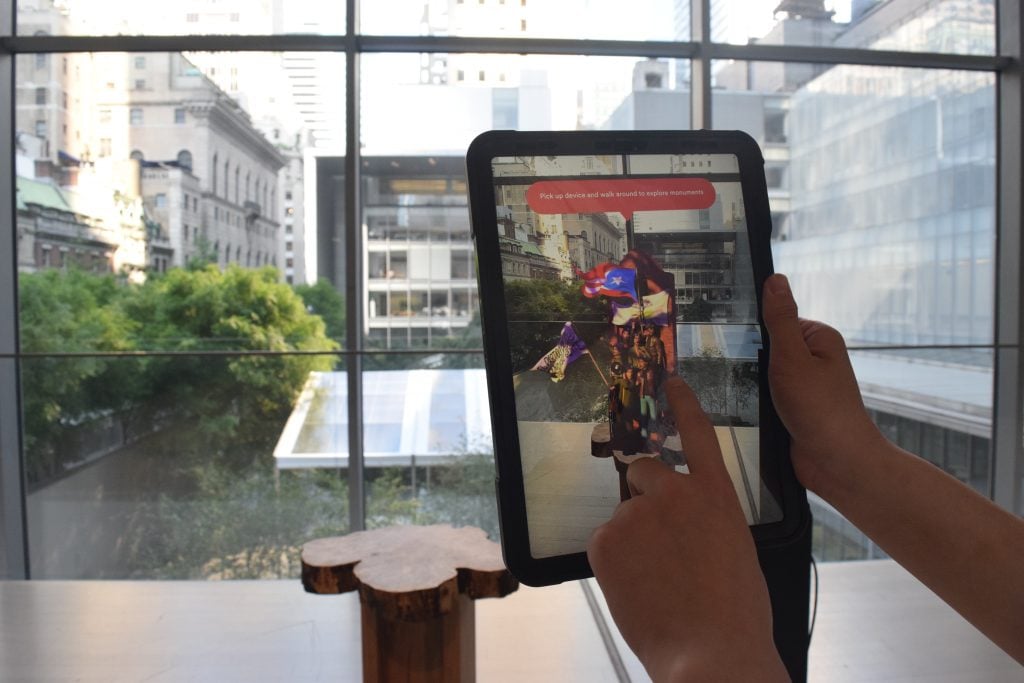Art & Tech
Wangechi Mutu Unveils a Towering New Monument—in A.R.
The sculptor's new work joins other augmented reality monuments on the Kinfolk app.

Starting September 13, art explorers in Brooklyn and New Orleans can conjure the East African water spirit Mami Wata—as envisioned by Wangechi Mutu—using their phones.
Mutu’s animation, titled Bibi Bahari, is the latest augmented reality (A.R.) monument on Kinfolk, a groundbreaking app that’s bypassing bureaucracy to install monuments celebrating overlooked stories. Bibi Bahari is part of Kinfolk’s “signature series” of location-based monuments, which launched last fall with contributions from Hank Willis Thomas, Derrick Adams, Tourmaline, and Pamela Council.
Kinfolk was launched in 2017 by parent company Movers and Shakers, which was founded by Idris Brewster, Glenn Cantave, and Micah Milner. That year, former New York Mayor Bill DeBlasio assembled a commission tackling calls to remove the Christopher Columbus statue in Columbus Circle. While Kinfolk’s part of a larger strategy of “uprooting white supremacy at its core,” as Cantave remarked in 2021, the app was founded on the desire to place a monument honoring the Haitian revolutionary Toussaint Louverture in Columbus Circle instead.

Kinfolk’s Toussaint Louverture AR monument. Courtesy of Kinfolk.
Before launching in February 2021, Kinfolk did a residency with the New Museum “to explore more deeply how this technology could be integrated with museums, communities, and art,” Brewster explained during a phone interview. Key grants from the likes of the Mellon Foundation helped them reach rollout. “Until that point, we were doing different installations, galleries, public demonstrations of the app, with prototypes,” he said. “That allowed us to pour into building something for public consumption.”
At first, Kinfolk only allowed users to view pre-stocked monuments they’d designed of legends like Maya Angelou and Bayard Rustin within the user’s own home.
“As soon as we were able to get back out into the world,” Brewster said, “we started expanding.” Kinfolk dropped scan mode, where users can scan physical artworks in-app to activate them. The endeavor included a few pieces at New York’s MoMA, and some murals in San Francisco.
In 2022, after team members at Niantic, the company behind Pokemon Go, tweeted out a piece that Time wrote about Kinfolk, Brewster reached out saying, “You all like what we’re doing—help us take it to the next level.” Kinfolk’s platform is built within Unity, and Niantic wanted to make its location-based technology, VPS Lightship, work within one of the Unity libraries.

One of the AR monuments Kinfolk produced at MoMA. Courtesy of Kinfolk
Thus, Kinfolk became one of Niantic’s earliest development partners. It helped Niantic work out that integration—and gained access to the millions of digital locations that Pokemon Go users have already scanned and stocked up in Niantic’s library. That helped power Kinfolk’s third, final category of in-app user experience: its signature series of geographically specific artworks, which it commissions from artists. Kinfolk hopes to soon create an open call, but for now, most come through its partnerships with cultural institutions.
Kinfolk wanted to include Mutu in its first signature series drop, but the timing wasn’t right. As the series’ second, standalone release, however, it gets to spotlight the Kenyan artist’s acclaimed work directly.
Bibi Bahari marks Kinfolk’s first moving endeavor—and its first to take place across two cities. The minute-long A.R. animation depicts a massive Mami Wata emerging from the waters of New York’s Brooklyn Bridge Park as well as The Moonwalk Riverfront Park in New Orleans. She rises, soars, and intertwines with an eel, her aquamarine scales scintillating all the while. Mami Wata’s dance is scored with the sounds of water. Droplets appear on the user’s screen, too, further immersing them in Mutu’s artwork.

Hank Willis Thomas, All Power to All People (2023). Courtesy of Kinfolk
“It talks about the importance of water and sea throughout African and Black culture,” Brewster said. “We wanted to create something that pays homage and respect to the role water plays in our lives.” Kinfolk’s press release noted that myths are one way humanity has made sense of frightening natural phenomenon, like the raging seas. Kinfolk’s choice to stage the monument in climate-prone New York and New Orleans feels especially apt.
Every monument on Kinfolk is accessible indefinitely. But Brewster is interested in limited-run AR monuments, too—which complement the medium’s ephemerality. Kinfolk might try that approach in its annual exhibitions with the New York City AIDS Memorial, kicking off next year. It is also exploring how artificial intelligence can further enliven their project; the team is currently working with James Baldwin’s family to activate his archive using A.I.
For Brewster, though, the most powerful advancement in Kinfolk’s mission lies in their work amplifying art’s leading voices through means they might not use otherwise.





